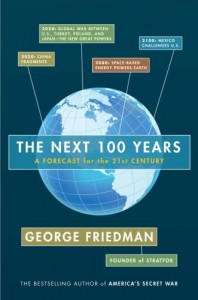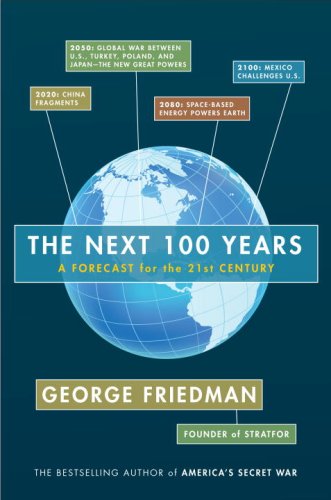 George Friedman’s geopolitical prophecy
George Friedman’s geopolitical prophecy
The Next 100 Years: A Forecast for the 21st Century is a book that admits it will not get everything right. The author George Friedman, founder of the private intelligence firm STRATFOR, takes up the prophet’s mantle and tells us what the 21st century might look like. His contentions seem, at first glance, fantastic: in 2050, the United States, allied with Poland, will fight World War III against Turkey and Japan; by 2100, Mexico will challenge the United States for hegemony. In his defense, he reminds us that Londoners circa 1900 would find ridiculous the claim that the Russians and Americans would be locked in a battle for control of the planet only 50 years later. All the same, many of these prognostications regarding our world’s future rely on Friedman’s sometimes-arbitrary privileging of certain historical trends. And though these prognostications make sense, Friedman’s predictions must be taken with a grain of salt as he discounts the role of individual choices in geopolitics.
Rule America, America Rules the Waves
The author does not establish one ruling historical fact for the 21st century. Rather, Friedman argues for the complex interweaving of many different geopolitical streams that will shape coming events. If anything is for certain, though, the 21st century will be the dawn of the true American era. He argues, and convincingly, so that the United States, despite current forecasts of doom, will remain the most powerful nation on Earth, based on America’s continued industrial might and its military supremacy, noting its unparalleled control of the sea lanes. That is, until another North American nation with a booming economy, Mexico, threatens it in 2100.
Until then, with American dominance secured, the United States will pursue its overarching strategy of preventing one hegemon from dominating the Eurasian landmass. This is perhaps the most brilliant geostrategic point of the book, effectively summing up American foreign policy and using it to guide the analysis of the rest of the book. From Russia’s collapse during a mini-Cold War in the 2020s to combat against Japan and Turkey in the 2050s, American geostrategy follows a simple, strong insight into the future.
Escaping the Malthusian Trap
The most salient geopolitical fact of the 21st century, though, is the specter of depopulation. Despite fears of shrinking food supplies and vast overcrowding, Friedman argues that continued industrialization and modernization in various areas of the world (China, India, the Middle East, etc.) will lead to populations peaking and eventually shrinking by the end of the 21st century. This will create dramatic new paradigms in international relations: by the 2030s, for example, Friedman argues that nations will begin subsidizing immigration in order to fill in dramatic holes in employment. This argument makes sense, with Freidman citing the declining populations of various post-industrial nations and U.N. forecasts of population shrinkage. These forecasts have the most far-reaching consequences: while the United States, with its historical affinity for immigration and proximity to developing countries with excess populations, can thrive in this environment, other nations with falling populations, such as Germany and Russia, will see their clout steadily diminish.
The above trend points to one of the underlying motifs of his book: huge, impersonal trends. Friedman has little concern for the individual character of nations or any individuals. Based on this, he can afford to make predictions on these trends which, at least, are beginning their development now. Granted, it would be impossible to predict a future for the next 100 years based on imagined individuals. One could not, in 1900, for example, foresee Hitler or Stalin taking power in Germany or the Soviet Union. Yet both happened, dealing damage to his argument at the book’s beginning that history is mostly shaped by the impersonal choices facing leaders.
In sum, Friedman’s prognostications are limited by his inability to go beyond the impersonal forces of history. He cannot, however, say precisely what an individual leader in 2050 will do to influence the course of human history, nor can he understand any socio-political trends not yet nascent. Nevertheless, his book remains a compelling analysis of the issues impacting our world. This should at least remind foreign policy thinkers and junkies to look at long-term trends, rather than remaining bogged down in small wars and smaller disputes.
